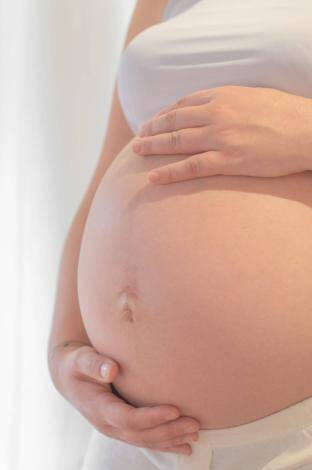The probability of the baby's sex is not always 50%

Gender reveal events have become a memorable moment in pregnancy, with couples gathering with friends and family to share the news. But what determines a baby's sex at the time of conception? While it is determined by the sperm's sex chromosomes in a process considered random, a new study suggests that there are factors that can tip the balance between a baby's sex and a male offspring.
The research, published in the journal Science Advances, included data from two large ongoing studies in the United States, the Nurses' Health Study II (NHSII) and the Nurses' Health Study 3 (NHS3), with birth records from 58,007 women. The analysis hoped to address questions such as whether the probability of having a son or daughter is a coin toss, with a 50-50 chance for each sex, or whether there are genetic traits or reproductive factors that affect this outcome.
Regarding the results of this study, EL TIEMPO spoke with Dr. Jorge Chavarro, a Colombian scientist who is currently a professor of nutrition and epidemiology at the Harvard T.H. Chan School of Public Health and one of the authors of the research.

The baby's sex isn't always 50% boy, 50% girl. Photo: iStock
How did this idea of investigating whether or not boys or girls are born randomly come about? How did that curiosity arise?
The person who really initiated this idea was the second author, Dr. Bernard A. Rosner, a biostatistician who had already seen several reports in the literature on this topic. They pointed out that, when looking at aggregate data and considering family size, the sex distribution doesn't appear to be completely random. So the main motivation was that curiosity: to understand how much of this is due to chance and how much isn't.
We used data from two large studies: the Nurses' Health Study 2 and the Nurses' Health Study 3. From these, we analyzed the pregnancy history of the participants. What we found is that, although at the individual level—where each live birth is the unit of analysis—the sex distribution appears random, when considering the presence of siblings (i.e., non-independent observations), the distribution deviates from what is expected. For example, in families with two children, a higher proportion of households have one boy and one girl than would be randomly expected. In larger families, with three, four, five, or six children, there are fewer cases with at least one boy and one girl than expected, and more cases of families with children of only one sex. The question then arises: does this have a biological cause or does it respond to patterns of reproductive behavior?

The baby's sex depends on several factors. Photo: BBC Mundo / Getty Images
What role does reproductive behavior play?
Other studies have shown that the decision to have more children is influenced by the sex of previous children. Specifically, in families with two boys or two girls, parents are more likely to seek a third pregnancy, compared to those who already have a boy and a girl.
And beyond behavior, did you find biological signals?
Yes. To study this, we eliminated the last child in each family from the analysis—since this is the one most likely to reflect a behavioral decision—and the associations became even stronger. This suggests that additional factors beyond reproductive behavior are at play. We then performed a diagnostic analysis of demographic, lifestyle, and reproductive factors of the women participating in the studies. We found that the woman's age at first birth was the only factor consistently associated with the likelihood of having children of only one sex.
How does a woman's age affect the sex of her children?
We found that the older a woman was at the time of her first child, the greater the likelihood of having children of only one sex. This could be related to the fact that women who begin childbearing later tend to have smaller families and fewer opportunities to "balance" the sex ratio.
And how does genetics influence it?
We then performed a genome-wide association analysis (GWAS). We compared the entire genome of women who had children of only one sex (only boys or only girls) with that of women who had at least one child of each sex. We didn't see any signal associated with having only boys or only girls, but we did see a very clear genetic signal with the probability of having only boys and a completely different, also genome-wide, significant signal with the probability of having only girls. This suggests that there may be previously undescribed biological mechanisms associated with the specific survival of male and female embryos, but we don't know exactly why this is the case. What is quite curious is that the signal we see, for both boys and girls, is not related to genes that have anything to do with embryonic development, with the probability of having spontaneous abortions, or with the probability of infertility.

Ultrasound scans indicate a baby's sex. Photo: iStock
What are they related to?
The signal we see in girls first is much stronger than the one we see with the probability of having only boys. Of the 25 strongest markers associated with girls, 20 are in the same gene, which has previously been associated with craniofacial development. But what does that have to do with the survival of female embryos? We have no idea, but it's absolutely fascinating.
This raises many questions about sex determination at the time of conception and embryonic survival. Sex determination may be 50-50 in theoretical terms, but clearly that probability is not constant among all couples. When analyzed at the individual level, it appears random, but if we consider siblings, we see that some couples have a greater or lesser probability of having children of only one sex. And since that probability appears to be randomly distributed in the population, combined with the common decision to "stop" after having both sexes, the observed pattern is accentuated.
What are these types of studies useful for?
There are two levels. The first is that it's simply fascinating from a scientific perspective. The second is that it has practical implications. For example, for those planning their family: if you already have two girls, there's a greater chance that if you have a third child, it will be another girl.
And at a scientific or clinical level?
This study clearly shows the need to consider correlations between pregnancy outcomes within the same woman or couple. It is known, for example, that the birth weights of two siblings are more correlated than those of two unrelated children. But these types of correlations are still frequently ignored in the medical literature. Our study is a clear example of how ignoring these correlations can lead to erroneous conclusions.
Science Editorial EL TIEMPO
eltiempo




